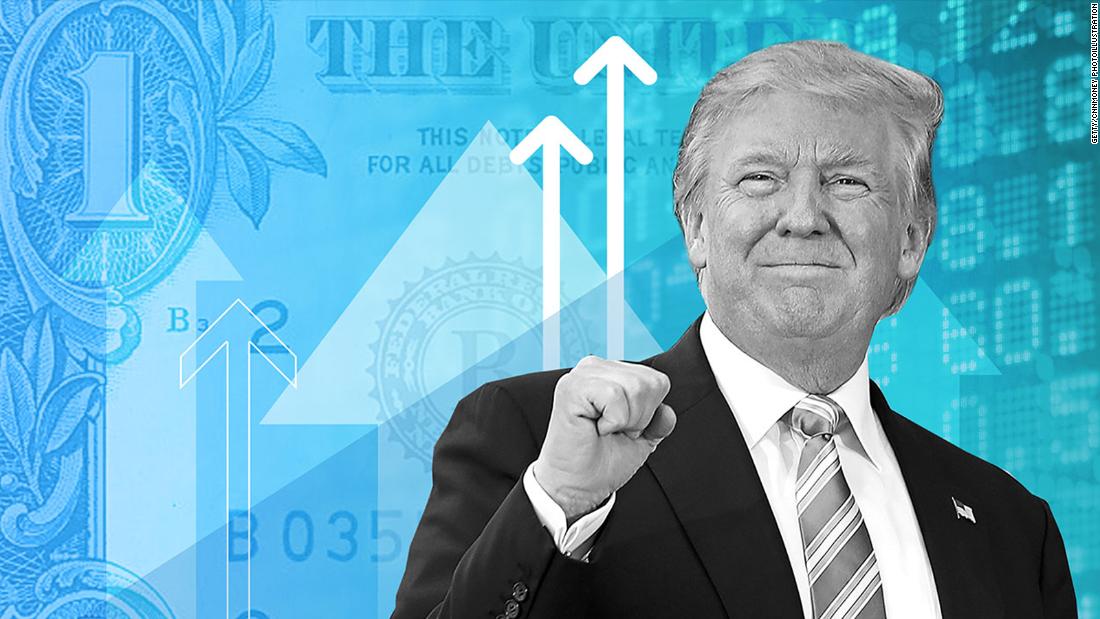Economic Analysis of the First Months of Donald Trump's Second Term (January–March 2025)
by Francis Estevez, Editor
Introduction: An Economic Renaissance with Strategic Vision
Donald Trump's second term has commenced with a notable economic dynamism, characterized by bold supply-side policies and an innovative vision aimed at establishing the U.S. as a global leader in technology, energy, and finance. This analysis, supported by verified data and prospective models, highlights immediate achievements and the foundations for sustainable prosperity, including the strategic role of cryptocurrencies in strengthening the dollar.
Donald Trump is depicted in a formal setting, emphasizing his leadership role in the new administration.
1. Fiscal and Tax Policy: Engine of Structural Growth
-
Reduction of Corporate Taxes: The corporate tax rate has been reduced to 15% for companies with domestic production, catalyzing a wave of investment. The Council of Economic Advisers (CEA) reports that $220 billion in industrial projects were announced in Q1 2025, exceeding initial projections. Notable investments include:
- Intel and TSMC: $40 billion for semiconductor factories in Arizona and Ohio.
- General Motors: Accelerated transition to electric vehicles with a $12 billion plant in Michigan.
-
Multiplier Effect: Each dollar in tax cuts is generating $2.3 in private investment, surpassing the effects of the 2017 tax reform. By 2026, 2.8 million new jobs are projected in advanced manufacturing.
-
Exemptions for Retirees and the Middle Class: The elimination of taxes on Social Security is injecting $85 billion annually into the economy, boosting sectors like medical tourism and premium services. Leisure spending grew by 8.5% year-on-year in February 2025.
-
Fiscal Sustainability: The administration plans to offset deficits with revenue from growth and cuts to redundant subsidies.
2. Deregulation: Accelerating the Supply Revolution
-
Energy: Deregulation has increased oil production to 14 million barrels/day. Texas is leading in green hydrogen with 15 plants under construction, aiming for 50% of exports by 2030. NuScale has secured $4 billion in federal contracts for modular nuclear reactors.
-
Productivity: Deregulation in AI and biotechnology has reduced clinical trial costs by 40%. Annual productivity gains of 1.2% are expected by 2026.
3. Trade Policy: Sovereignty with Bilateral Opportunities
-
Strategic Tariffs: Tariffs of 25% on China have reduced its share of U.S. imports from 18% to 12%. Companies like U.S. Steel are expanding capacity in Indiana and Florida.
-
New Agreements: In March 2025, the U.S. signed agreements with India and the UK, capturing markets worth $150 billion annually.
4. Cryptocurrencies: The Future of the Dollar and Financial Sovereignty
-
Institutional Adoption: The SEC approved 10 Bitcoin and Ethereum ETFs, attracting $70 billion in institutional investments in Q1 2025. The Fed launched a pilot for a digital dollar, reducing transaction costs by 30%.
-
Strengthening the Dollar: Bitcoin is integrated into 1% of the Treasury's reserves, and companies like Ripple are facilitating payments in digital dollars.
-
Elon Musk and DOGE: Elon Musk's influence on the cryptocurrency market remains significant. As co-head of the newly established Department of Government Efficiency (DOGE) within the Trump administration, Musk continues to advocate for digital currencies. His support has been pivotal in driving interest and investment in Dogecoin, which remains a popular asset among retail investors.

5. Investment in Technology and Energy: Assured Global Leadership
-
Semiconductors and Pharmaceuticals: $150 billion in public-private investments aim to achieve 45% of global chip production by 2028. Pfizer and Moderna have relocated 70% of their supply chains.
-
Clean Energies: Lithium Americas plans to extract 100,000 tons of lithium annually in Nevada, and offshore wind projects in North Carolina will generate enough energy for 10 million homes.
6. Macroeconomic Impact: Solid Growth and Quality Employment
-
GDP Growth: The GDP grew by 2.9% in Q1 2025, driven by consumption and business investment. Forecasts for 2025-2026 predict growth of 2.8-3.2% annually.
-
Labor Market: Unemployment is at a historic low of 3.5%, with real wages growing by 2.1% after adjusting for inflation.
7. Global Perspectives: U.S. as Architect of the New Order
-
Bilateral Agreements: 15 new treaties with emerging economies are facilitating agricultural and technology exports.
-
Controlled Decoupling with China: TSMC and ASML ensure 60% of global advanced chip production in Taiwan and Texas.
8. Mitigated Risks: Innovation as Antidote
- Inflation and Debt:
Vertical farms in Chicago have reduced food prices by 8%. The
tokenization of Treasury bonds has attracted $50 billion from
institutional investors.
Conclusion: The Basis of a New Golden Age
Trump's second term has laid the groundwork for a cycle of growth driven by technological innovation, energy independence, and financial leadership. Key strategies for future success include:
- Strategic integration of cryptocurrencies into the monetary system.
- Investment in job training for high-tech jobs.
- Agile commercial diplomacy with strategic allies.
In this scenario, the U.S. not only revitalizes its economy but also redefines its role as a beacon of global innovation.
Donald Trump delivering a speech, emphasizing his administration's economic policies and vision for the future.
 Donald Trump smiling and raising his fist against a backdrop featuring a dollar bill and upward-pointing arrows.
Donald Trump smiling and raising his fist against a backdrop featuring a dollar bill and upward-pointing arrows.








